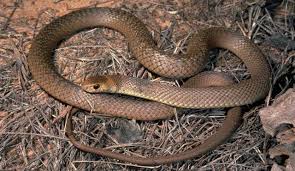With the warmer weather starting, we thought it would be timely to share some information about snake-bites. At this time of year, even in suburban areas dogs and cats can encounter snakes, particularly where there are areas of water such as a lake or dam.
The most common type of snake bites we see in our area are from the eastern brown snake and the king brown snake.

We have treated 6 dogs in 5 days!!!!!!
If you believe your pet has been bitten by a snake, it is imperative you get them to us as soon as possible. While it is useful for us to know the type of snake your pet has been bitten by, do not put yourself in any danger by attempting to identify the snake. Individual species of snake can vary in colour and pattern considerably and it can be very difficulty to make an accurate identification yourself.
Symptoms to look for:
Several factors will determine what sort of reaction your pet has to a snake bite. The type of snake (some species of snake are more venomous than others), the amount of venom injected (depends of the size and maturity of the snake) and the site of the snake bite are all contributing factors.
The most common area for dogs and cats to be bitten is on the limbs and around the head.
The most common signs of snake bite by a venemous brown snake are as follows:
- Shaking or twitching of the muscles.
- Sudden weakness followed by collapse.
- Seizures
- Salivation
- Dilated pupils not responsive to light.
- Vomiting.
- Blood in the urine.
- In the later stages paralysis may occur – this usually starts from the hind legs.
IMPORTANT!!! Please note that while your pet may initially show symptoms of snake bite, it is quite common for them to then appear to make a quick recovery, leaving you wondering if perhaps they were not bitten after all, or if they even need any treatment.
Unfortunately this decision can ultimately mean the difference between life and death. It is imperative that you ignore this apparent period of calm if you suspect they were bitten as they will rapidly deteriorate again once if they have been bitten.
Veterinary treatment:
The first step is an examination: We will assess the clinical signs they are showing and determine the best treatment from there.
Diagnostic tests may be required to determine if your pet has actually been bitten.
Veterinary treatment varies with each individual case, how severe the symptoms are and how rapidly the symptoms progress. Treatment usually consists of intravenous fluids and the administration of antivenom to neutralise the snake venom in the pet’s body. Some patients require multiple vials of antivenom.
Ongoing veterinarian and nursing care in hospital will be required until the pet has recovered sufficiently to go home.
What happens after your pet has been discharged
Once the pet is discharged, they need lots of rest and t.l.c for the following 7 days.
Please phone us anytime on (07) 4151 3688.

